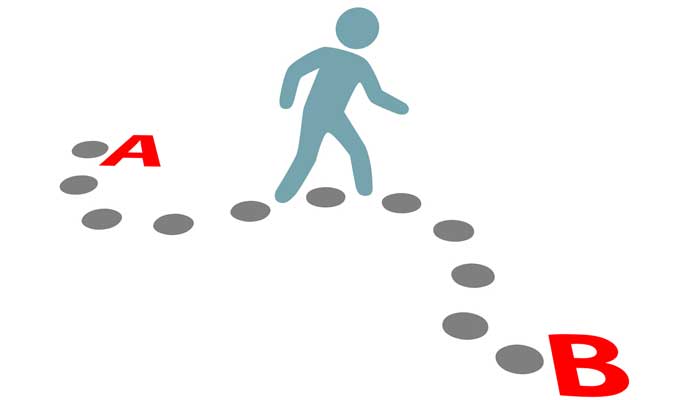Develop better leadership habits to thrive in an age of information overload
Learning to do more in-depth thinking and taking full advantage of hidden decision-making opportunities can reduce anxiety.
Note: This is part two in a three-part series addressing how leaders at every level can become better equipped to navigate the new world of work. Read part one on bridging the digital–human divide.
Thirty years ago, Richard Saul Wurman’s prescient book Information Anxiety defined the fallout caused by the widening gap between what people understand and what they think they should understand. He pointed out that the technology-fueled proliferation of superfluous data, or “noninformation,” had created a toxic blend of distraction and apprehension.
In the time since Wurman identified this affliction, computing power has increased exponentially, and the devices we carry in our pockets — and touch about 2,600 times a day — have connected us to virtually all of the world’s information. As a result, the angst Wurman described has escalated significantly. And business leaders like you are not immune. Even the sturdiest are prone to severe information anxiety, if not information anarchy, in the new world of work. This overwhelming intellectual clutter can decrease the quality of your thinking and decision making, two capabilities vital to your success.
However, a combination of dialectical thinking and being able to perceive and make more choices can give you the ability to better navigate the complicated, ambiguous, and fast-changing circumstances you confront.
Learn to combine seemingly contradictory ideas
Will leaders who can sustain focus and reflect deeply have a killer competitive advantage in the future, or will fast, agile thinkers who identify and solve problems the quickest win out? Yes, to both. Will balance and well-being be the mark of a truly authentic and centered leader, or will hard work, drive, and grit define success? Yes, to both. With so many seemingly divergent points of view and sources of competing information on leadership, you might feel overwhelmed or even paralyzed.
Being a good leader does seem like a tall order. You need to be open-minded, yet maintain a decisive point of view. You need to collaborate in ways that bring out the best contributions in others, yet take bold action even when it’s unpopular.
The future of leadership is dialectical in every way. Instead of reducing things to an either/or disposition, which can create false and anxiety-provoking dilemmas, dialectical thinking embraces a combination of this and that. It’s a mind-set that widens the aperture and considers opposing views not as incompatible, but as potential source material for new and unexpected combinations of ideas and insights. Without this bridge making embedded into your thinking, you’re left with limiting choices.
The first step to gaining a dialectical-thinking advantage is to avoid convergence traps. These pop up when you’re rushed, stressed, or in seemingly familiar terrain that lulls you into believing you know just what to do. In these moments, the fast and convenient path often wins out over the novel route. Instead, let your thoughts diverge. And as they diverge, ask questions that broaden your mental boundaries, such as, “Although that seems logical, what would the other side of the argument be?” Here’s an example of how a stressed manager leveraged dialectical thinking to consider her career path.
If you can see an element of independence in how you spend your time each day, you empower yourself to dictate your own path.
Pham wanted to land the next promotion, but the workload and quality of life compromises required to get it felt unsustainable to her. Both outcomes — either getting the promotion or foregoing it to maintain better work–life balance — aligned with her values (achievement, success, family, health, etc.) and each felt important. Yet the two outcomes seemed incompatible. A dialectical question made room for the combination of both: “How can I continue growing as a leader and advancing in my career while designing my leadership lifestyle in a healthier way?” Pham used this question to actively guide her thinking and action toward a result that included satisfying elements of both outcomes. That result was a conscious choice to submit to longer hours every other week, with a biweekly reduction in travel. Negotiating this flexibility allowed her to reconnect with friends and family and resume her yoga practice, which she’d neglected.
Embracing “this and that” doesn’t make you wishy-washy; it makes you dynamic. You start flexibly and gradually stiffen your resolve as information translates to insights, insights elevate to “aha” moments, and open questions turn into clear conclusions.
Recognize that you have more choice than you think
Does your workload feel like an endless stream of obligations and heavy demands? Do you feel powerless and stuck with other people’s decisions and ideas? Are you inundated with information that is actually only minimally relevant to your priorities? If so, you might be choice-blind: You perceive an absence of choice, even though options are everywhere. If you can see an element of independence in how you spend your time each day, you empower yourself to dictate your own path. Here are three examples of instances in which you could be overlooking an opportunity to take initiative by deciding what something means, how much it matters, and what to do about it.
• Your calendar has you at a meeting this afternoon and you feel marginally obligated to attend, yet you aren’t invested in the substance or outcomes. If you go through the motions and attend the meeting, what choice are you making about the value of your time?
• You said “yes” to a committee assignment that no longer feels relevant, yet you stay the course and politely continue the work. What choice are you making about your priorities and the value of your contributions?
• You’re reading this article right now, which presents a range of choices: You could leave a comment and tell me I’m off base. You could share the link with a friend. You could apply the suggestions to your life. Or you could just absentmindedly click to the next digital distraction.
In these situations, you can implement a repeatable process to ensure that you’re mindful about making the best possible choice:
- Recognize that you have a choice and resolve to make a decision.
- Leverage dialectical thinking.
- Conduct additional due diligence by comparing and contrasting priorities, speaking to others to get a different point of view, and testing your options for intuitive alignment with your values.
- Weigh your options carefully, then confidently make the call.
Combining your newly developed dialectical thinking with your decision-making process will help you move to action more efficiently.
The future of leadership is counterintuitive
All of this advice is counterintuitive, and on the surface may seem like it will only exacerbate information anxiety. And that’s the rub: At the very moment you’re suffering under a heavy workload and mental strain, which would seem to justify taking shortcuts, I’m suggesting that you actually do more mental work. The best way forward is to make room for more in-depth thinking and to actively embrace more of the important decisions hiding in plain sight around you.
And, yes, leaders can do both without getting bogged down, because better thinking and deciding reduce mental clutter, which frees up bandwidth. Instead of lingering on unresolved thoughts and the burden of unmade decisions, you clean things up. Over time you’ll find that you’re more mentally efficient and can leverage this capability to navigate the future of leadership.






